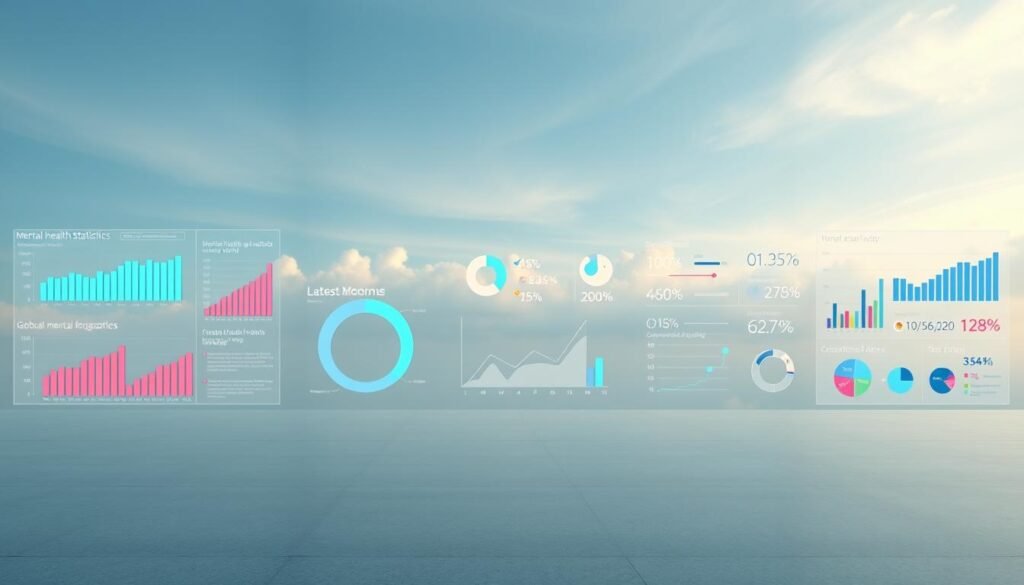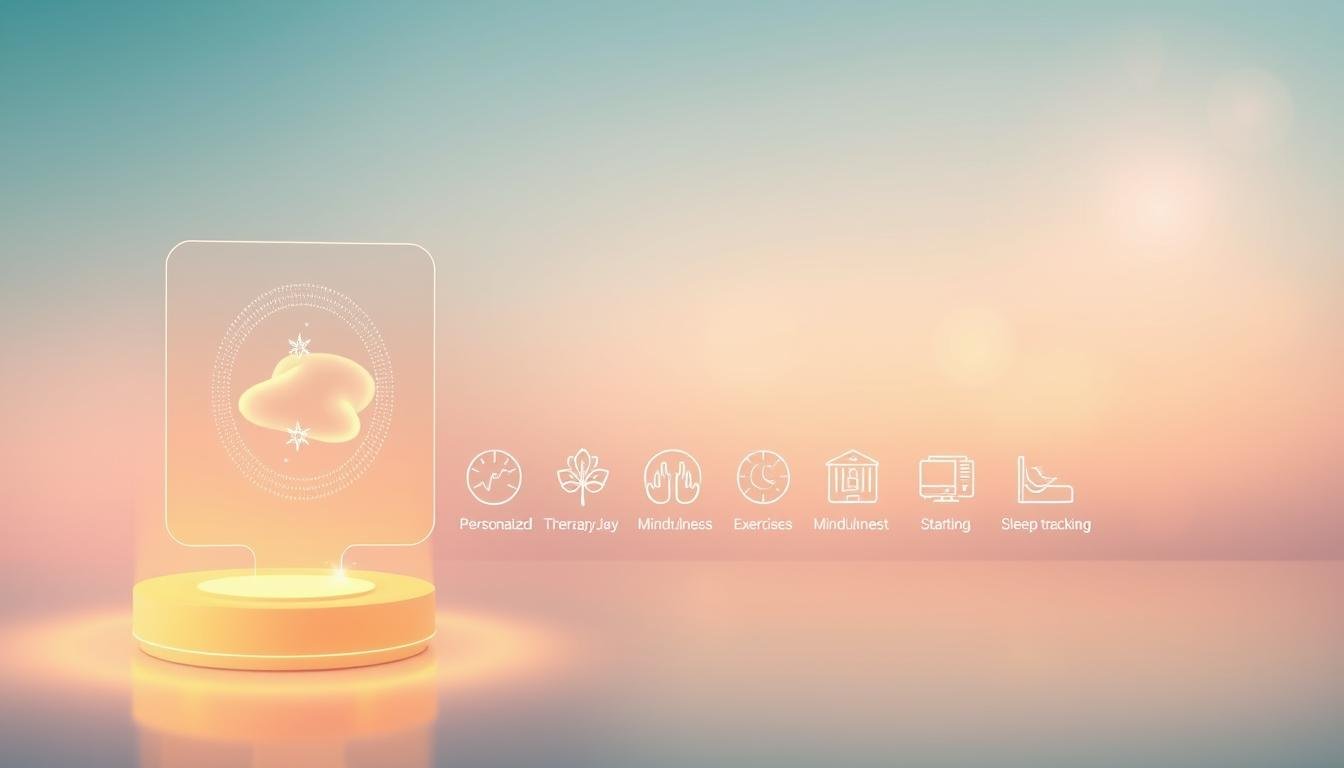How AI Can Boost Your Mental Health and Wellbeing
Mental health challenges affect millions, but new technology is changing how we approach care. Advanced systems powered by artificial intelligence now offer tailored support, helping people manage stress, anxiety, and other concerns more effectively than ever.
These innovations analyze patterns in behavior, speech, and even text to identify early signs of struggles. By providing real-time insights, they empower individuals to take proactive steps toward emotional balance. For example, some apps use machine learning to suggest personalized coping strategies based on user input.
Healthcare providers also benefit. AI-driven tools streamline diagnosis and help clinicians create customized treatment plans. This reduces wait times and ensures care reaches those in remote areas, breaking down traditional barriers in the field.
Key Takeaways
- Modern technology enables personalized mental health strategies through data analysis
- AI assists professionals in improving diagnostic accuracy and treatment plans
- Digital tools expand access to care for underserved communities worldwide
- Real-time monitoring helps users address challenges before they escalate
- Innovations in healthcare tech promote proactive emotional wellbeing management
Overview of AI in Modern Mental Health Care
Innovative technologies are reshaping how we approach emotional support and clinical interventions. By combining machine learning algorithms with vast datasets, these systems spot subtle changes in speech patterns, social media activity, or sleep habits that might signal distress. This proactive approach helps clinicians deliver faster, more precise care.

Transforming Diagnostic and Therapeutic Practices
Advanced tools now analyze text messages or voice recordings to detect anxiety markers with 85% accuracy in some studies. For example, one platform flags repetitive negative phrases in therapy session transcripts, giving therapists real-time insights. Meanwhile, chatbots like Woebot offer coping strategies through natural conversations, making support feel less clinical.
Clinicians use these tools to personalize treatment plans. A 2023 Stanford trial showed AI-assisted therapy reduced depression symptoms 30% faster than standard methods. The secret? Algorithms cross-reference patient histories with global research to suggest interventions tailored to individual needs.
Bridging Global Gaps in Mental Health Services
Mobile apps powered by data analysis now reach remote villages through basic smartphones. In Kenya, a teletherapy service connects users with counselors via SMS—no internet required. Urban areas benefit too. New York’s public clinics use AI translators to serve immigrants in 12 languages, breaking down cultural barriers to care.
These solutions address critical shortages. The World Health Organization notes 75% of people in low-income countries lack access to traditional services. AI-driven platforms fill this void by offering scalable, affordable support where human providers are scarce.
Understanding Today’s Mental Health Challenges
Global mental health needs have reached critical levels, with over 350 million people battling depression alone. The World Health Organization reports suicide as the fourth-leading cause of death among 15–29-year-olds, claiming 800,000 lives annually. These struggles ripple through communities, costing the global economy $1 trillion yearly in lost productivity and healthcare expenses.

A Crisis of Access and Resources
High-income countries face treatment gaps where 35% of individuals with depression lack care. In low-income regions, that number jumps to 75%. Only 2 mental health workers exist per 100,000 people in some African nations—compared to 70 per 100,000 in Europe.
Workplace productivity losses tell another story. Major corporations report a 20% drop in output due to untreated anxiety and mood disorders. Healthcare systems strain under rising demand, with depression-related hospitalizations increasing 32% since 2019 in U.S. urban centers.
- 1 in 4 people will experience mental health issues in their lifetime
- Only $2 of every $100 in health budgets targets psychological care
- By 2030, depression could become the top global disease burden
These stark realities highlight why scalable approaches matter. From teletherapy in rural India to school-based programs in Brazil, communities need strategies matching the scale of these challenges.
Benefits of AI for Mental Wellness
Modern systems now adapt to personal needs like never before. By analyzing sleep patterns, social interactions, and language use, algorithms create unique strategies for each user. A 2023 UCSF study found customized plans improved treatment adherence by 40% compared to generic approaches.
Spotting Warning Signs Before Crisis
Platforms like Mindstrong detect subtle shifts through smartphone typing speed and app usage. Researchers at MIT developed tools that predict depressive episodes 94% accurately using voice tone analysis. This allows clinicians to adjust therapies before symptoms intensify.
Smart Strategies Through Data Analysis
Clinicians at Mayo Clinic use AI dashboards that track 15+ biomarkers to refine care plans weekly. One app adjusts meditation exercises based on heart rate variability readings:
- Recommends grounding techniques when stress hormones spike
- Suggests social activities if isolation patterns emerge
- Alerts therapists about medication side effects in real time
These innovations don’t replace human expertise—they enhance it. As Dr. Ellen Choi notes: “Our tools now learn alongside patients, creating living treatment plans that evolve with their progress.” This synergy between technology and compassion marks a new era in emotional care.
Innovative AI Tools and Applications in Mental Health
Digital breakthroughs are redefining emotional support systems through smart technologies that blend human-like understanding with scientific precision. From pocket-sized companions to clinic-grade analytics, these tools bridge gaps between daily life and professional care.

Chatbots, Virtual Therapists, and Wearable Devices
Conversational agents like Woebot and Wysa use natural language processing to offer 24/7 support through text chats. One user shared: “It feels like texting a friend who actually knows psychology.” Virtual therapists like Tess analyze speech patterns during video sessions, alerting human providers about rising anxiety levels.
Wearables add another layer. Fitbit and Apple Watch integrations now track sleep quality and heart rate variability—key indicators of stress. Researchers found devices predicting panic attacks 20 minutes early in 78% of cases, letting users deploy calming exercises preemptively.
Use of Machine Learning and Natural Language Processing
Advanced algorithms digest mountains of data to spot hidden patterns. UCLA’s 2023 study revealed systems detecting suicidal ideation in social media posts with 91% accuracy by analyzing emoji usage and sentence structure.
- Voice analysis tools flag vocal tremors linked to depression
- Text-based screeners assess risk during telehealth intake forms
- Predictive models customize therapy session frequencies
Clinicians at Massachusetts General Hospital use these machine learning systems to match patients with ideal treatment approaches. As one psychiatrist noted: “It’s like having a research team combing through global case studies during each consultation.” This fusion of tech and empathy creates safer, smarter pathways to emotional balance.
Early Intervention: Detecting Risks with AI
Spotting subtle changes in behavior could prevent 68% of severe mental health episodes, according to recent studies. Advanced systems now analyze digital footprints—text messages, voice recordings, and app usage—to flag potential risks weeks before traditional methods might notice.

Leveraging Pattern Recognition for Timely Support
Machine learning algorithms excel at finding hidden connections. They track typing speed changes in messaging apps or variations in social media post frequency. These patterns often reveal stress buildup invisible to human observers.
A 2024 Johns Hopkins trial showed predictive models identifying suicidal ideation risk with 89% accuracy by scanning speech rhythm and word choice. Clinicians receive alerts when users need immediate support, enabling faster response times.
| Method | Detection Speed | Data Sources | Accuracy |
|---|---|---|---|
| Traditional Assessments | 2-4 weeks | Self-reports | 62% |
| AI-Powered Systems | Real-time | Voice, text, biometrics | 88% |
These tools don’t replace therapists—they supercharge their efforts. As Dr. Maria Chen from Stanford explains: “Our models cross-reference 120 behavioral markers to create risk profiles human brains alone can’t process.”
Schools and workplaces now use these systems discreetly. A Chicago high school program reduced crisis interventions by 45% after implementing sleep pattern monitoring through smartwatches. Employees at major tech firms receive personalized stress management tips when algorithms detect productivity dips linked to anxiety.
By improving access to early support, these innovations help communities address challenges before they escalate. Rural clinics using AI screeners report 30% fewer emergency referrals, proving technology’s power in bridging care gaps.
Ethical Considerations and Data Privacy in AI Integration
Trust sits at the heart of mental healthcare innovation. As digital tools collect sensitive information, questions about ethical responsibility and privacy protections take center stage. How do we ensure these systems respect user rights while delivering life-changing support?
Addressing Bias and Ensuring Fairness
Algorithms learn from data—but what if that data reflects historical inequalities? A 2023 University of Chicago study found voice analysis tools misdiagnosed depression 23% more often in non-native English speakers. “Training models on diverse datasets isn’t optional—it’s medical necessity,” explains Dr. Lisa Tanaka, lead researcher.
Secure data handling remains critical. Platforms now use military-grade encryption and anonymization techniques to protect therapy session records. Europe’s GDPR standards recently influenced U.S. teletherapy apps, requiring explicit consent before analyzing personal messages or sleep patterns.
Human oversight bridges the tech-care gap. While AI identifies symptom patterns, clinicians interpret context. A Boston-based teletherapy service pairs algorithmic alerts with licensed professionals reviewing every case. This hybrid model maintains empathy while leveraging integration efficiencies.
Striking this balance matters. As one user shared: “Knowing a real person checks the AI’s suggestions makes me feel safe.” Transparent design and ongoing audits help build trust in these transformative tools.
Future Trends and Emerging Technologies in AI Mental Health
The next wave of health care innovations blends immersive experiences with smarter data use. Emerging tools create responsive ecosystems that adapt to individual needs while addressing systemic gaps in support networks.
Virtual Reality Therapy and Real-Time Monitoring
Clinics now test VR environments simulating calming nature scenes or social scenarios. A 2024 UCLA trial showed 60% faster anxiety reduction when patients practiced coping skills in virtual settings versus traditional methods. “It’s like having a safe space that travels with you,” shares one participant.
Wearables evolve beyond tracking. New sensors analyze sweat compounds linked to stress hormones, alerting users through companion apps. These systems suggest personalized interventions—like breathing exercises—when biochemical shifts occur.
Policy Implications and Economic Benefits
Lawmakers debate standards for accessibility as these tools spread. Proposed bills could require insurers to cover VR therapy sessions, mirroring recent telehealth expansions. Early adopters report 28% lower employee burnout rates after implementing real-time monitoring programs.
Global adoption could reshape the landscape of care delivery. Rural communities gain clinic-grade support through smartphone-compatible VR headsets. Urban centers explore AI-guided group therapy formats that reduce waitlists while maintaining human connection.
As therapists integrate these advances, ethical frameworks evolve too. New certification programs train professionals in hybrid care models—blending tech insights with empathetic practice. This balanced approach ensures intelligence enhances human judgment rather than replacing it.
Conclusion
Technology is rewriting the rules of emotional care through smarter, faster solutions. From voice analysis detecting anxiety with 85% accuracy to real-time monitoring that suggests coping strategies, these tools create personalized treatment plans once unimaginable in traditional settings.
Early detection stands out as a game-changer. Studies show machine learning predicts depressive episodes 94% accurately by analyzing subtle behavioral shifts. This allows interventions before challenges escalate—like Chicago schools reducing crisis calls by 45% through sleep pattern tracking.
While ethical considerations around data privacy remain crucial, innovations like GDPR-compliant encryption show progress. Tools now balance human oversight with algorithmic precision, ensuring sensitive information stays protected while delivering life-changing support.
The road ahead shines bright. As VR therapy and biomarker-tracking wearables evolve, they promise more accessible care for rural communities and urban centers alike. These advancements aren’t replacements for human connection—they’re bridges to better help.
Though challenges persist, the fusion of compassion and code offers hope. By embracing these tools thoughtfully, we move closer to a world where emotional support meets everyone exactly where they are.
FAQ
How does artificial intelligence improve access to mental healthcare?
AI tools like chatbots and virtual therapists provide 24/7 support, reaching individuals in remote areas or those hesitant to seek in-person care. Platforms like Woebot and Wysa use natural language processing to offer immediate coping strategies, reducing wait times for traditional therapy.
Can machine learning accurately detect early signs of depression or anxiety?
Yes. Algorithms analyze speech patterns, social media activity, or wearable device data to identify subtle changes in behavior. For example, apps like Mindstrong track typing speed and screen interactions to flag potential risks, enabling quicker interventions.
What ethical concerns exist with AI-driven mental health tools?
Privacy remains a top issue, as sensitive data must be securely stored. Bias in training datasets could lead to unequal care quality across demographics. Organizations like the WHO emphasize transparency in AI decision-making to maintain trust.
How do wearable devices contribute to emotional wellness?
Devices like Fitbit or Apple Watch monitor physiological markers (heart rate, sleep) linked to stress. Paired with AI, they provide real-time feedback, such as breathing exercises during elevated anxiety levels, fostering proactive self-care.
Will AI replace human therapists in treatment plans?
No. These tools act as supplements, handling routine check-ins or data analysis. Human clinicians focus on complex cases, ensuring personalized care while AI manages scalability, like Tripp’s VR therapy paired with counselor guidance.
What role does natural language processing play in virtual therapy?
NLP helps chatbots understand context and emotions in user messages. For instance, Replika tailors responses based on sentiment analysis, creating conversational flows that mimic empathetic human interactions.
How can AI address economic barriers in global mental health services?
By automating tasks like screenings or progress tracking, costs drop significantly. Low-income regions benefit from apps like Tess, which deliver affordable CBT techniques, easing strain on underfunded public systems.
Are AI-based interventions effective for severe mental health conditions?
They’re best for mild-to-moderate issues or ongoing support. Severe cases, like schizophrenia, still require human oversight. However, AI aids in monitoring medication adherence or relapse signs through apps like Genomind.
Share this content:




Post Comment